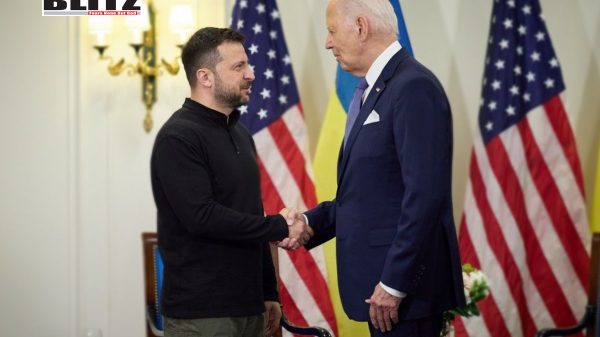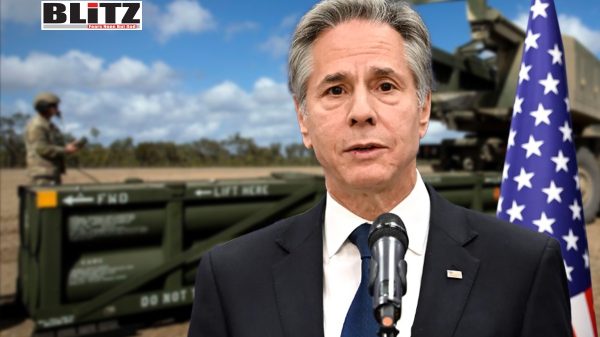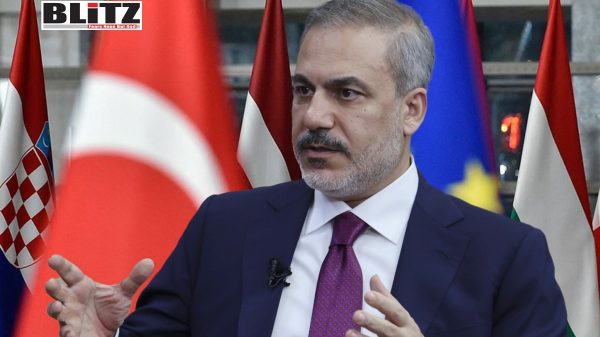Biden’s delayed military aid and its impact on Ukraine
- Update Time : Sunday, November 24, 2024

Last week, US President Joe Biden took a significant step in the ongoing conflict in Ukraine by finally granting permission for Kyiv to deploy American-made long-range missiles against targets inside Russia. This move, coupled with the administration’s decision to provide antipersonnel landmines, marks a notable escalation in US support for Ukraine. However, the timing and delay of these measures raise questions about the effectiveness and consistency of America’s approach to the war.
Both the long-range missiles and the antipersonnel mines will undoubtedly enhance Ukraine’s capabilities on the battlefield, particularly in the strategically important Kursk Oblast region. Since August, Ukrainian forces have controlled a portion of Russian territory in this area, a bold move that has compelled Moscow to divert resources away from other fronts. Ukraine’s success in Kursk has provided a much-needed morale boost, showcasing the potential for victory when adequately armed and supported.
Despite these advantages, the Biden administration’s hesitancy in approving the use of long-range missiles underscores a recurring pattern: delivering critical aid to Ukraine only when the situation becomes dire. For over 100 days, Ukrainian forces in Kursk have faced mounting pressure, including a significant Russian counteroffensive bolstered by the deployment of over 10,000 North Korean troops. Ukrainian intelligence pinpointed Russian troop staging areas and supply depots, but these targets remained out of range for existing Ukrainian weaponry. Frustratingly, US reluctance to approve long-range missile use allowed Russia to strengthen its position, potentially prolonging the conflict.
The issue of delayed military aid has been a hallmark of US support for Ukraine since the war began in 2022. To Biden’s credit, his administration acted swiftly in the early weeks of the conflict, providing essential assistance that helped Ukraine defend Kyiv and mount counteroffensives. Yet, as the war dragged on, a troubling pattern of indecision emerged.
The delay in providing HIMARS multiple launch rocket systems is a prime example. Despite Ukraine’s urgent requests, these systems did not arrive until after Russia had captured Mariupol in May 2022. Similarly, Ukraine’s appeals for Patriot air defense systems went unanswered until a surge in Russian airstrikes in late 2022 forced the US to act. Even then, the time required to train Ukrainian forces on these systems left the country vulnerable during the winter months.
Cluster munitions, tanks, infantry fighting vehicles, and ATACMS long-range missiles followed a similar trajectory. While all these systems eventually made their way to Ukraine, their delayed arrival often forced Ukrainian forces to react defensively rather than proactively shaping the battlefield. This reactive posture has not only cost Ukraine valuable time and resources but has also undermined its ability to capitalize on strategic opportunities.
The delay in approving long-range missiles is particularly glaring in the context of the ongoing operation in Kursk Oblast. By holding Russian territory, Ukraine has created significant leverage for future negotiations while forcing Moscow to stretch its military resources. However, without the ability to strike deep into Russian territory, Ukraine’s forces have been unable to fully exploit their strategic position.
Had the Biden administration approved the use of these missiles earlier, Ukrainian forces could have disrupted Russian supply lines and command centers, weakening Moscow’s ability to mount a counteroffensive. Instead, the delay allowed Russia to regroup and deploy additional troops, increasing the difficulty and cost of maintaining control over Kursk.
The provision of antipersonnel landmines, while a step in the right direction, also comes late in the game. These mines could have bolstered Ukrainian defenses against Russian advances months ago, potentially preventing the escalation of fighting in the region. The administration’s reluctance to provide these weapons earlier, likely due to pressure from within the Democratic Party, highlights the internal divisions that have hindered US support for Ukraine.
The timing of Biden’s decision has also raised questions about its political implications. Some critics argue that Biden, now a lame-duck president set to leave office in January, should have acted sooner to strengthen Ukraine’s position. Others suggest that the timing may have been influenced by recent meetings between Biden and former President Donald Trump, who is set to take office in 2025.
Speculation abounds that Trump may have played a role in the policy shift, given his expressed desire to end the war. If true, this would mark a rare instance of bipartisan cooperation on foreign policy. Regardless of the motivations, the decision to allow Ukraine to target Russian command and control centers has strengthened the US position in potential peace negotiations, providing Trump with additional leverage to pressure Moscow.
For many Ukrainians, the Biden administration’s pattern of delayed aid has been a source of growing frustration. While they acknowledge the importance of US support, they feel that the current approach-providing just enough assistance to maintain the status quo but not enough to secure a decisive victory-has prolonged the war and its devastating consequences.
This dissatisfaction has led some Ukrainians to consider Trump as a potential ally. While Trump’s stance on Ukraine has been met with skepticism, there is little doubt that he is eager to broker a deal to end the conflict. Many Ukrainians hope that a Trump presidency would bring a more decisive approach, though others remain wary of his intentions and the potential costs of such a deal.
The Biden administration’s decision to approve long-range missile use and provide antipersonnel mines, though overdue, is a step in the right direction. These measures will enhance Ukraine’s ability to defend its gains in Kursk and potentially shift the balance of power on the battlefield. However, the delays that have characterized US support for Ukraine serve as a cautionary tale.
Timely aid can mean the difference between success and stalemate. The U.S.’ hesitancy to act decisively has not only increased the human and financial costs of the war but has also limited Ukraine’s ability to achieve its strategic objectives. Moving forward, US policymakers must recognize that proactive support is essential to securing a lasting resolution to the conflict.
As the US prepares for a transfer of power, the coming months will be crucial for Ukraine. Whether Biden’s latest decision will yield meaningful results remains to be seen, but one thing is clear: the stakes have never been higher. For Ukraine, timely and decisive action from its allies will be key to determining the outcome of this war-and the future of its sovereignty.













Leave a Reply